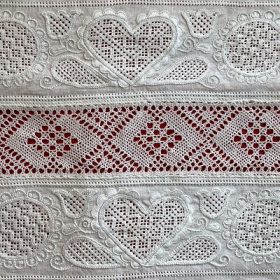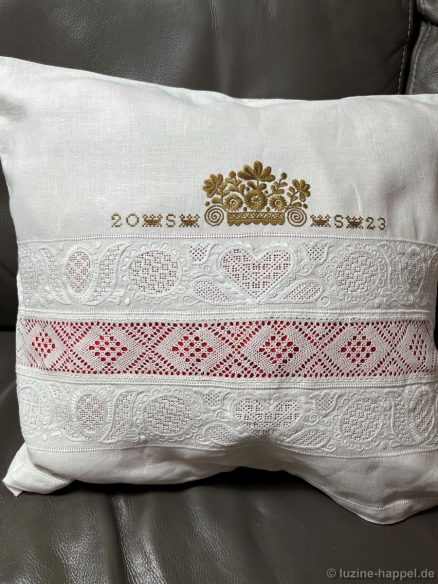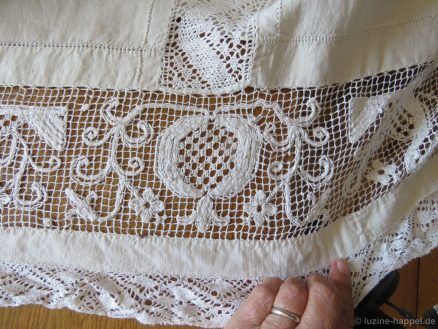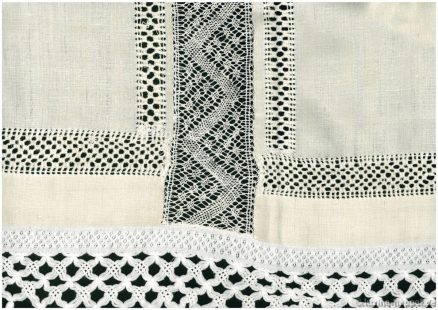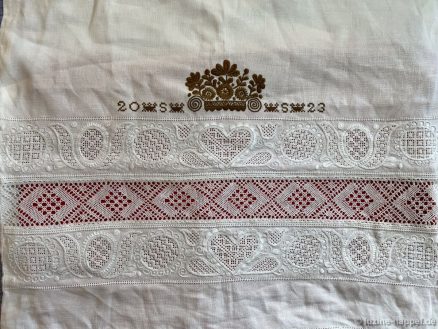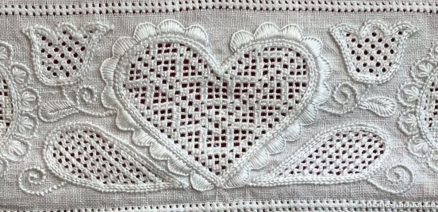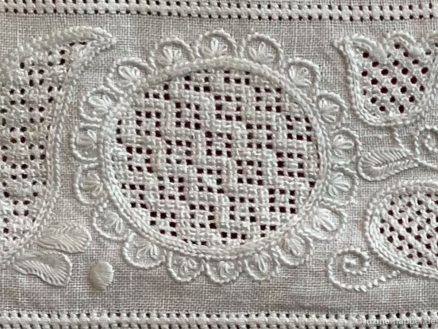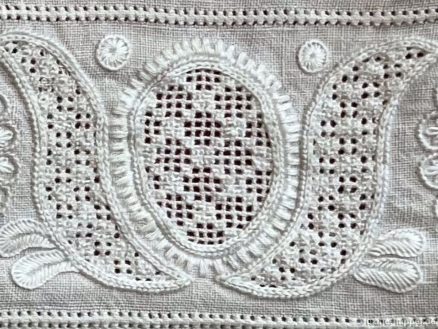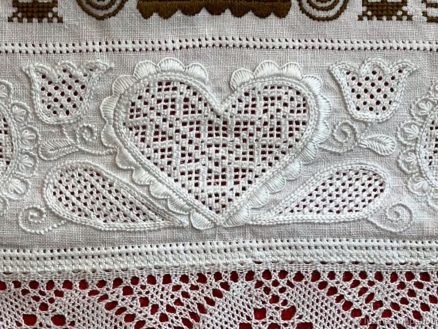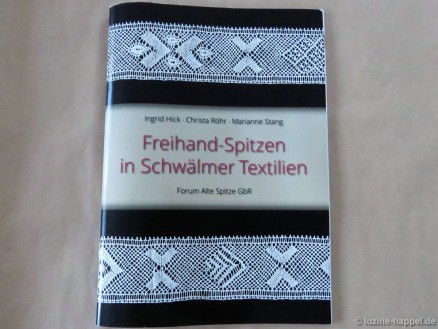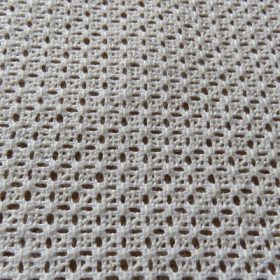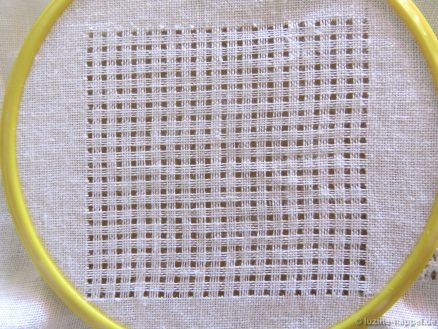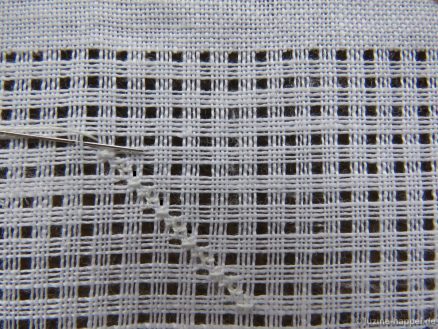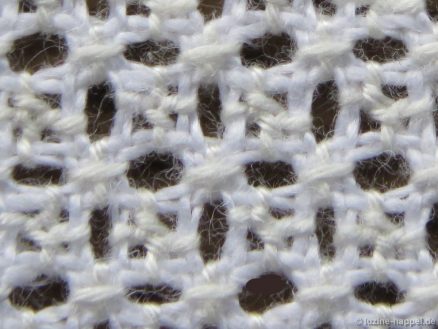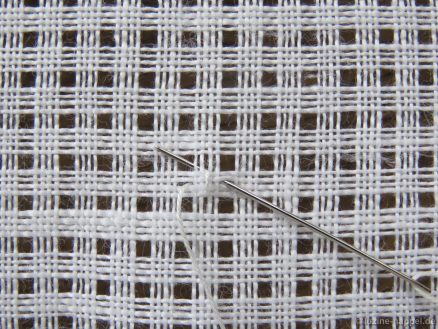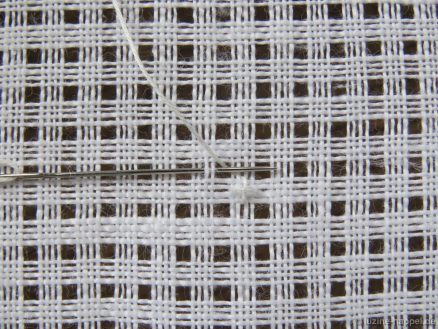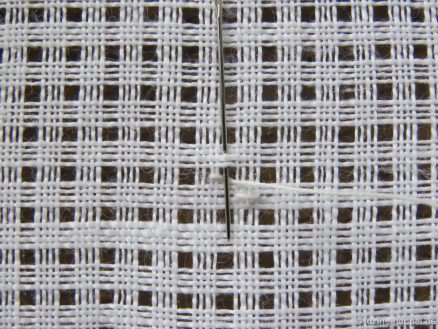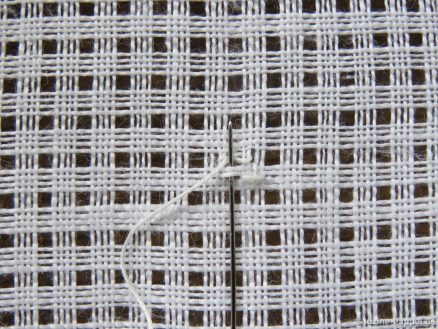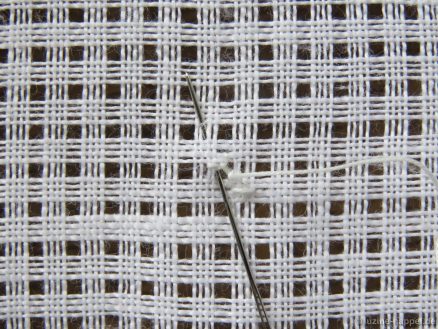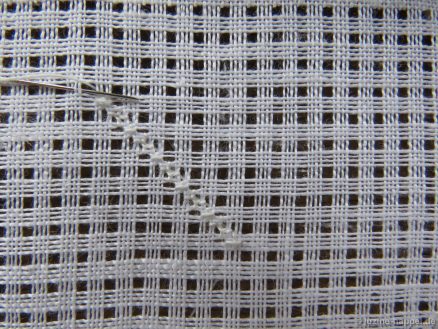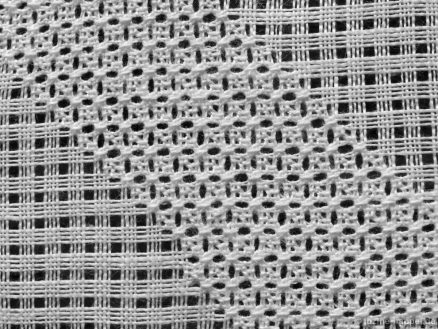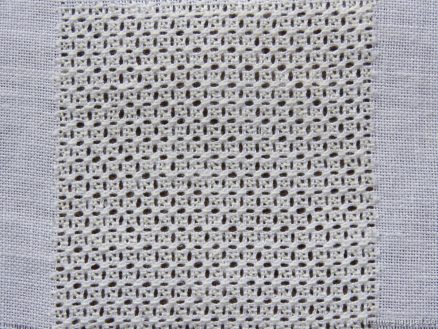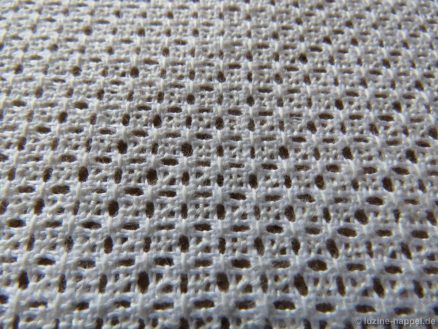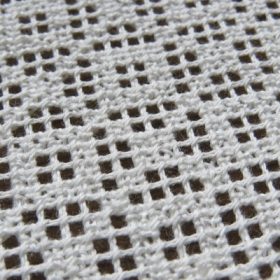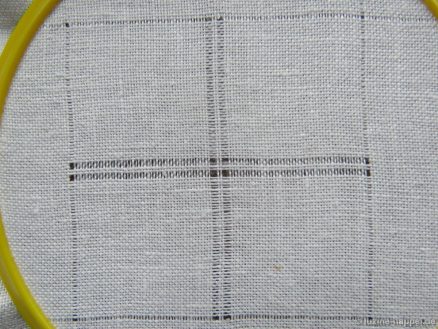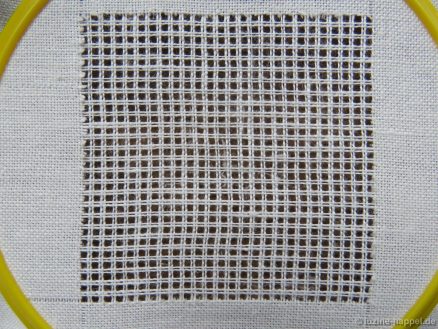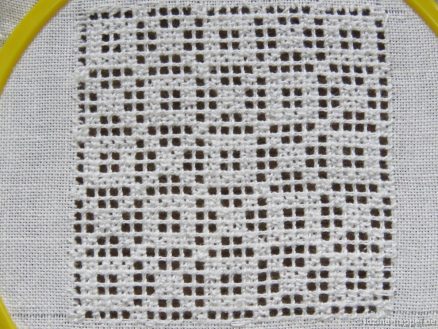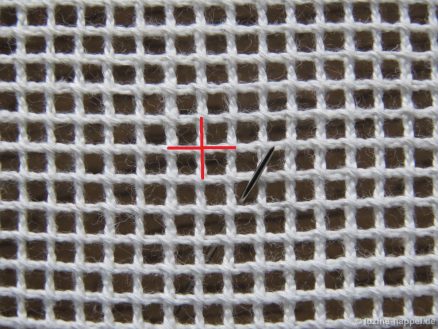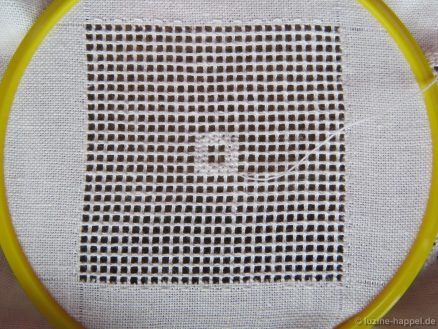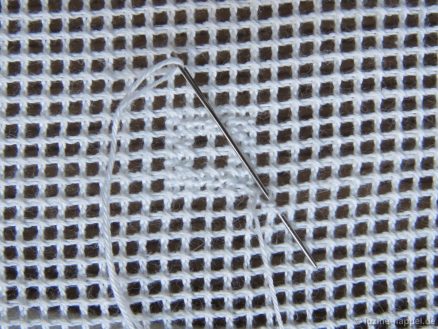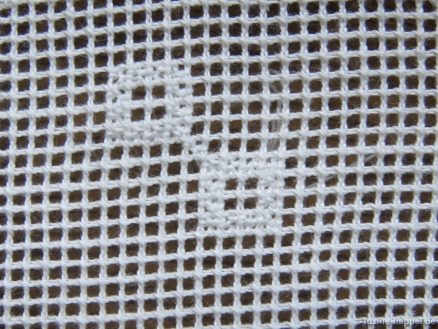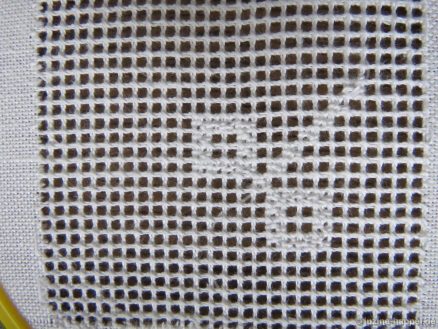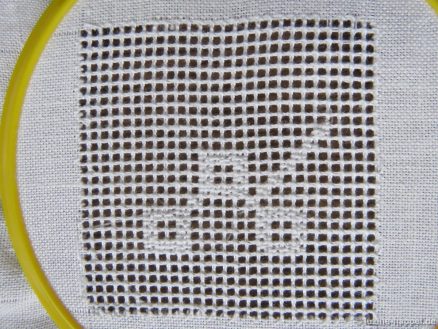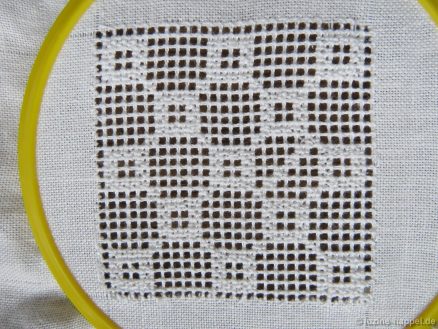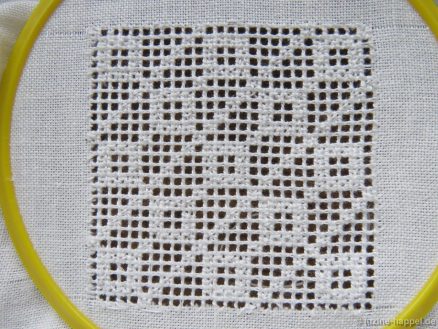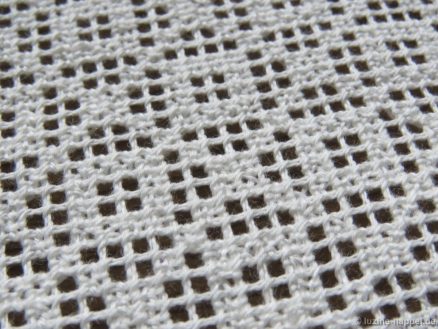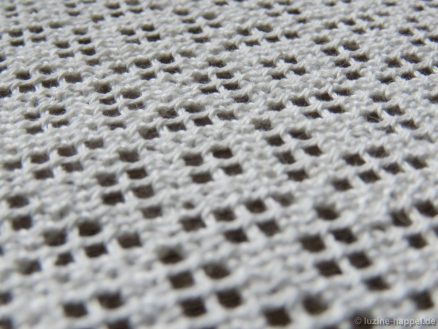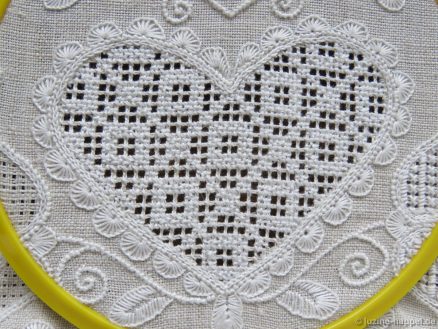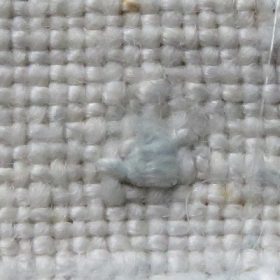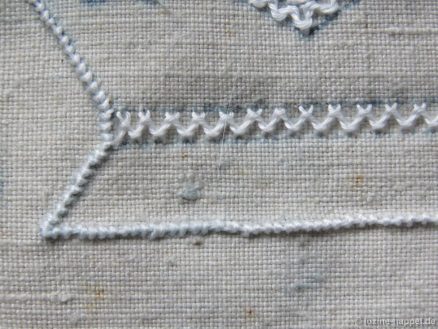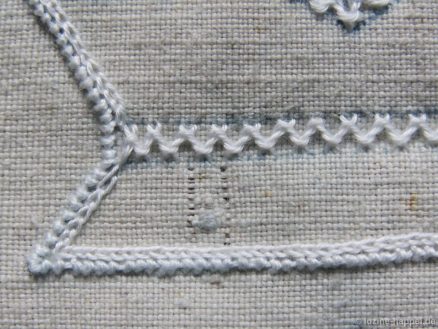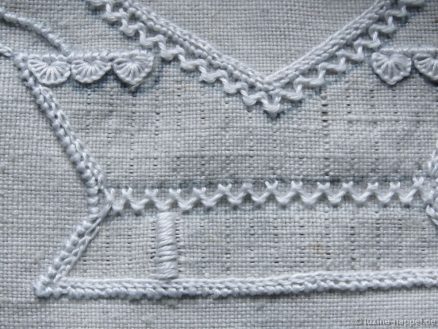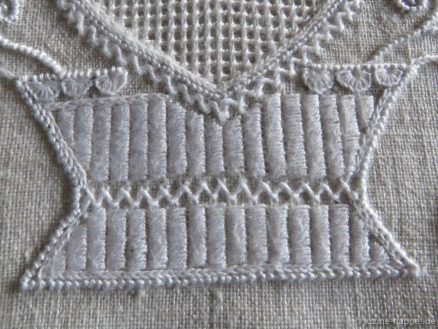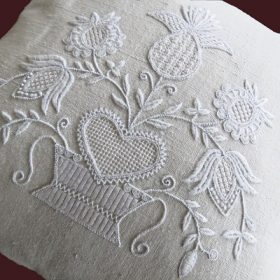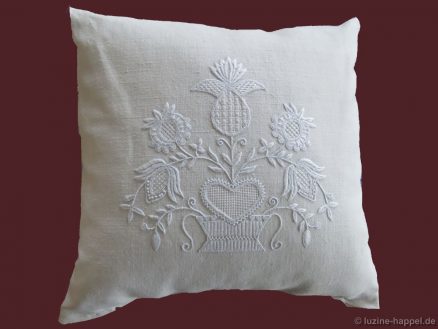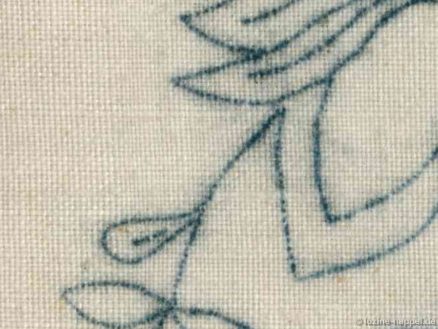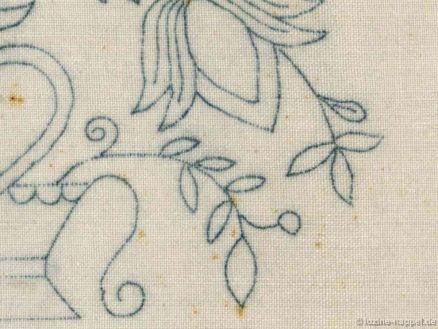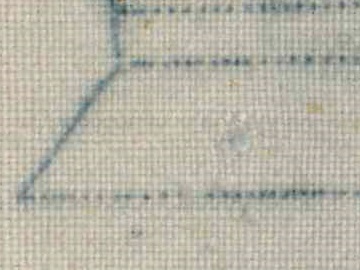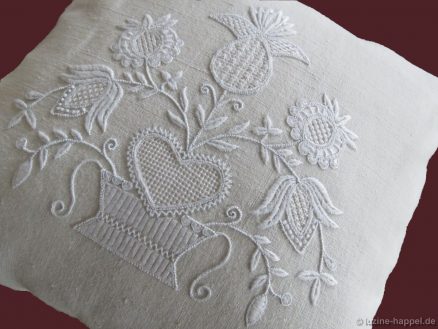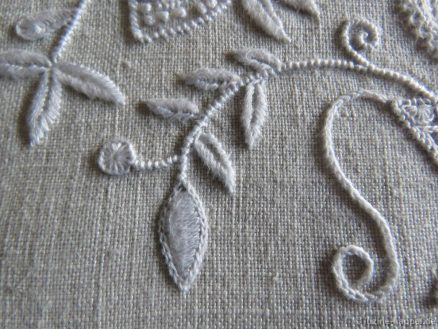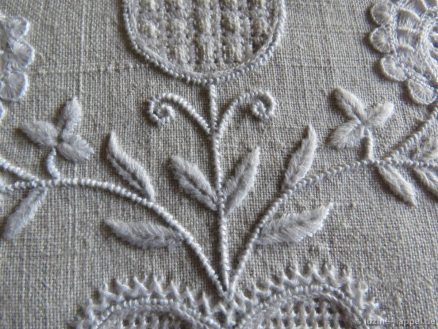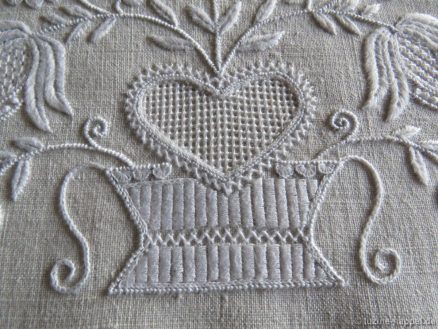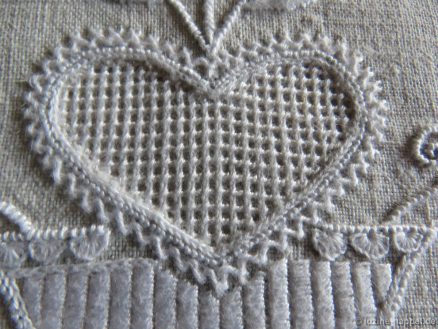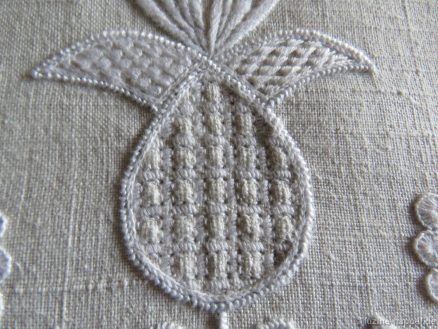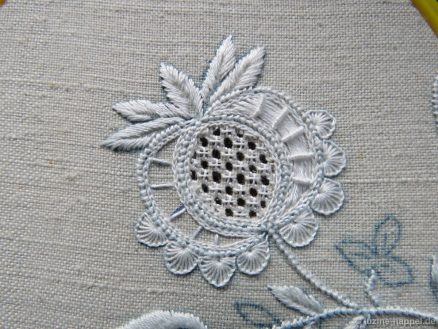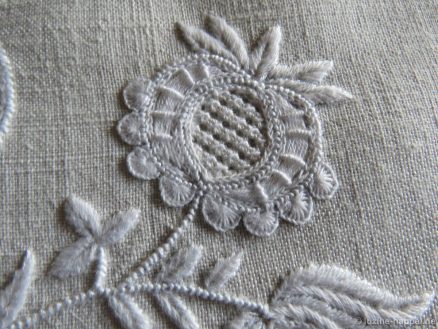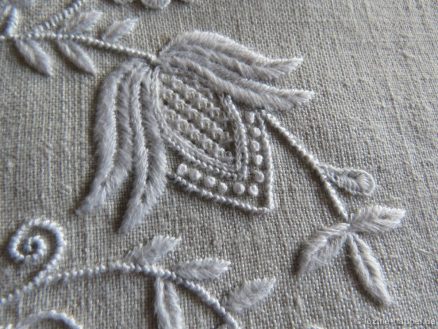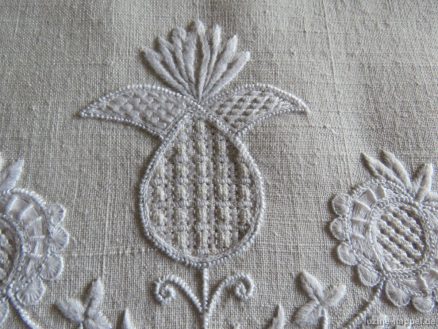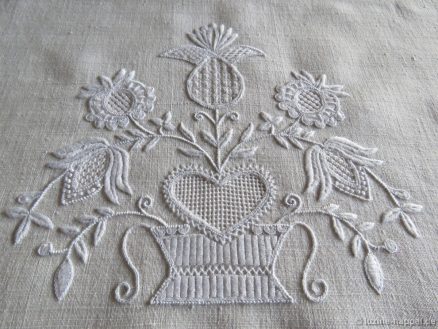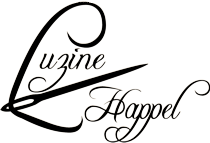Recently I have shown many design options with needle-weaving hems.
Sylvia Sellmaier has now created an interesting alternative on a pillowcase.
She combined typical Schwalm whitework borders and a Schwalm crown with a bobbin lace insert.
Bobbin lace has a long tradition in the Schwalm (see also: Bobbin lace in the Schwalm (1) and Bobbin lace in the Schwalm (2) ).
Neukirchen was a center of Schwalm bobbin lace production for a long time. However, bobbin lace was mostly used as an edge finish.
But I also know of historical pieces with bobbin lace inserts.
Bobbin lace can be found both as an edge decoration and as an insert combined with a fillet embroidery border on a Schwalm bed cover from the late 18th century.
A bed cover from the beginning of the 19th century shows a wide bobbin lace insert between needle-weaving hems. The edge of the cloth was decorated with the machine lace/ trimmings that were just emerging at the time.
In my large collection I have five other pieces with different bobbin lace inserts:
• a bed cover with elaborate early Schwalm whitework and very fine bobbin lace,
• a parade cushon with needle-weaving hems and gimp (?) bobbin lace
• a parade cushon with a very wide Schwalm whitework border, needle-weaving hems and a wide bobbin lace insert,
• a bed cover with various bobbin lace bands and a crown as well as
• another bed cover from 1844 with a crown, elaborate openwork pattern borders, a wide bobbin lace insert and a machine-made trimming.
I will introduce these pieces in later blog posts.
But now to the pillowcase from Sylvia Sellmaier.
She embroidered the initially continuous fabric for her pillow with two identical whitework borders – each bordered by a row of Four-sided stitches.
She chose the classic motifs of heart, tulip, leaf and
circle as well
Oval. She filled the areas between the motifs with tendrils, leaves, Blanket stitch eyelets and satin stitch points. As border stitches she used Blanket stitch scallops, 2short – 2long and the rarely seen variant with scallops made of Coral knot stitches, filled with groups of 3 Daisy stitches.
To fill the motif areas, she used traditional openwork patterns, usually with Rose stitches.
A popular Schwalm crown shape with a basket, palmette branches, flowers and tendrils – embroidered with stranded cotton in Anchor colour 888 – “crowned” her embroidery.
Her initials and the year were attached to the crown, separated by small cross-stitch crown ornaments.
The borders were spaced the same width as the bobbin lace that was used later. After the embroidery was finished, the fabric was cut apart and folded to the back at a distance of 10 fabric threads from the Four-sided stitches.
Each edge was finished with two rows of stitches. The first row is a “half Four-sided stitch.” Sylvia Sellmaier found it in a lace book. The second stitch is a traditional Four-sided stitch. Both stitches were worked through two layers of fabric. After completing the edge stitches, the excess fabric was cut off
and the lace sewn on.
For the insert, Sylvia Sellmaier worked
from a pattern from the book
Freihandspitzen in Schwälmer Textilien
Ingrid Hick, Christa Röhr, Marianne Stang
Zu beziehen bei:
Forum Alte Spitze GbR
Am Tomberg 18
52531 Übach-Palenberg
However, she made the lace using the torchon technique.
Sylvia Sellmaier hopes that through this blog post embroiderers/lace makers will be found who have similar pieces and are willing to show them or share their insights with her.
